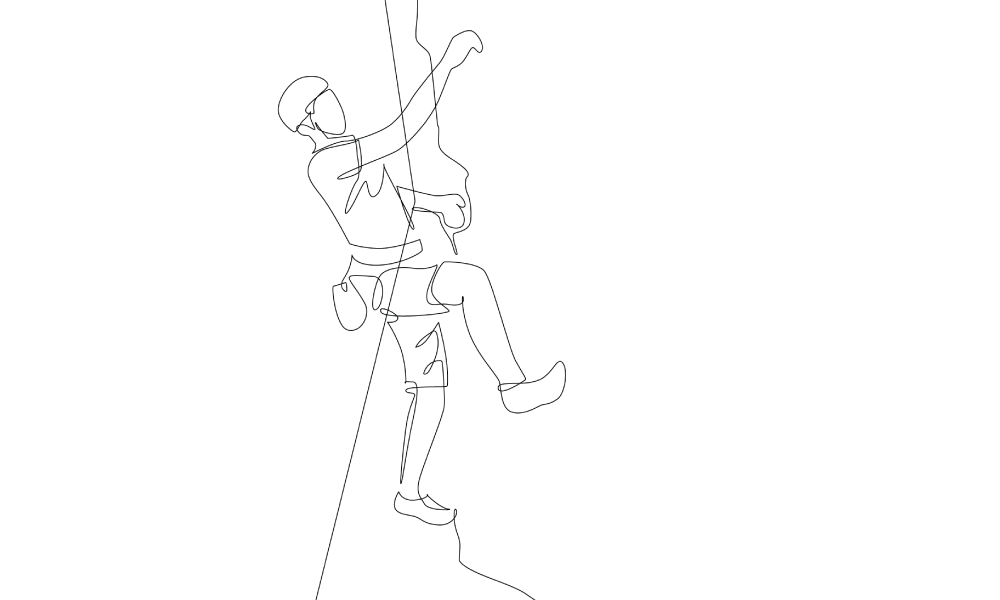Home » Guide to Quitting Weed » Week 2
What to Expect During the Second Week of Quitting Weed

Preparing to quit or reduce
Beginning your journey
Week 2
Making progress
You’ve come a long way
Preparing for the future
Looking forward
Day 8
Congratulations on Making it to Week 2
 Congratulations on making it to week 2! This is a massive feat, and you should feel incredibly proud.
Congratulations on making it to week 2! This is a massive feat, and you should feel incredibly proud.
Week 2 may feel a little easier than last week. Some of the intensity of withdrawal may have subsided, which can come as a relief. Don’t be alarmed, though, if the acute withdrawal symptoms continue on into the second week. Depending on your age, sex, and amount that you used, you may be more susceptible to experiencing severe and prolonged symptoms. In the coming week, it is still very common to experience depressed mood and anxiety as well as continued sleep disturbances and cravings. The Guide will take you through some of these symptoms for the coming week and strategies to combat them.
Day 9
Withdrawal: Anxiety and Depression
 Although anxiety and depressive symptoms can occur acutely, they can also persist or even worsen over the first month of abstinence. This has a lot to do with the recalibration of neurotransmitter systems in your brain, primarily via diminished activity in the reward center and overactivation of the stress response.
Although anxiety and depressive symptoms can occur acutely, they can also persist or even worsen over the first month of abstinence. This has a lot to do with the recalibration of neurotransmitter systems in your brain, primarily via diminished activity in the reward center and overactivation of the stress response.
Basically, your reward center becomes desensitized by the chronic ingestion of marijuana, which means that your body isn’t able to react as strongly to life’s everyday pleasures. The lack of energy and inability to enjoy the things around you may feel bleak and maybe even a little scary. Some people describe a longing for who they used to be when they smoked or worry that they may not ever experience the thrill of life again. You may wonder whether you need weed to be you.
The answer to the latter question is a resounding FALSE. This is really just your brain playing tricks on you. Take some time to think about what you were really like when you smoked. What was the thing about your life with marijuana that you wanted to change? The withdrawal period can make you want to look back, to hold onto certain memories without considering the broader implications. We encourage you to look forward to the next, better day. The discomfort of now is only temporary.
Day 10
Strategies: Benefits of Exercise
 During your cessation journey, multiple people and sources have probably told you to exercise (The Guide included). That’s because exercise is one of the most beneficial, non-pharmacologic interventions that can be employed during the cessation period. Users may anecdotally report that exercise makes you feel good and can help clear your mind, and these sentiments are backed by clinical trials, too.
During your cessation journey, multiple people and sources have probably told you to exercise (The Guide included). That’s because exercise is one of the most beneficial, non-pharmacologic interventions that can be employed during the cessation period. Users may anecdotally report that exercise makes you feel good and can help clear your mind, and these sentiments are backed by clinical trials, too.
Exercise has a demonstrated benefit on symptoms of depression, anxiety, sleep, and appetite across a wide variety of addictions. For marijuana users in particular, regular exercise has been shown to decrease depressive symptoms, reduce cannabis consumption and cravings, and increase the percentage of days abstinent during a cessation attempt1,2
Why is this so? It all goes back to neurochemistry. You’ve likely heard of the concept of a “runner’s high”, and researchers have long sought to understand its biological underpinnings. Post-exercise euphoria has traditionally been attributed to the increased production of endorphins, which signal through opioid receptors in the body. Though this still may be true, in part, growing evidence suggests that the endocannabinoid system (ECS) is critically important in mediating this effect3.
If you recall, chronic cannabis use results in downregulation of cannabinoid receptors in the brain and, consequently, dampens signaling through the ECS. Exercise increases the production of the endogenous cannabinoid AEA and increases the sensitivity of cannabinoids receptors to their ligands4,5. These two effects collectively increase signaling through the ECS and may help mitigate the neurochemical alterations associated with chronic cannabis use and withdrawal.
If you haven’t already incorporated exercise into your routine, consider trying out new types of exercise to find something you find enjoyable. There’s lots of choices out there, and your brain may thank you.
Day 11
Strategies: Managing Triggers
 When you get a craving to use, there is usually some identifiable trigger. A trigger is any person, place, thing, or situation that brings on that unwanted urge to smoke. These are entirely different for each individual and some may be more powerful than others.
When you get a craving to use, there is usually some identifiable trigger. A trigger is any person, place, thing, or situation that brings on that unwanted urge to smoke. These are entirely different for each individual and some may be more powerful than others.
Take a minute to think about some of your triggers—maybe you’ve already experienced some and maybe you can anticipate others. Write them down if it helps. Usually seeing or smelling weed is the most powerful trigger, but triggers can also be a place that reminds you of somewhere you used to get high or an activity during which you used to smoke. Triggers can also be whole emotional states like anxiety or boredom.
No matter what your triggers are, the best strategy for dealing with them is to avoid them altogether. Don’t buy weed or have it easily accessible. If you know it will be at a party, don’t go (at least in the beginning). The emotional triggers or unexpected situations can be a bit trickier. You can’t plan for everything, and you can’t prevent an emotion in the first place. What you can do, though, is try out new strategies to deal with those emotions or unexpected events. Maybe it’s meditating or taking a walk that helps with anxiety, or a new hobby or project that helps with boredom. When all else fails, fall back on what motivated you to quit in the first place. If you wrote the reasons down, revisit them.
There is no way around temptation and there will undoubtedly be times when you start to convince yourself why it’s okay to use again. The best you can do is be prepared to ignore or redirect those thoughts. If you can get yourself through those few minutes or hours of intense cravings, that is success. Take note of what works and stay strong.
Day 12
Withdrawal: Vivid Dreams
 Now that the first week or so has past, you may have an easier time going to sleep at night. However, many individuals still experience sleep disruption, particularly with strange or disturbing dreams. Many users describe these dreams as being more vivid than ever before. Depending on the content, you may actually wake up feeling emotionally exhausted from your dreams. So, what’s going on here?
Now that the first week or so has past, you may have an easier time going to sleep at night. However, many individuals still experience sleep disruption, particularly with strange or disturbing dreams. Many users describe these dreams as being more vivid than ever before. Depending on the content, you may actually wake up feeling emotionally exhausted from your dreams. So, what’s going on here?
There are a couple theories out there, and they all emphasize that these dreams are a reaction to the way marijuana affected your sleep when you were using. In general, there are four stages of sleep that differ based on the degree of arousal. Marijuana prolongs the deepest phase of sleep, called slow-wave sleep, and shortens the phase of mentally restorative sleep, called REM sleep1. If you recall, users feel like they’re well rested (longer slow-wave sleep), but actually aren’t (shorter REM sleep).
The opposite reaction is thought to occur when you stop using marijuana: slow-wave sleep is shortened and a phenomenon called REM rebound occurs, during which you more quickly enter and stay in REM sleep. Because REM sleep is the phase in which you dream, researchers have hypothesized that this accounts for the vividness of your dreams. It is nothing to worry about, though it may be bothersome. Like many of your other symptoms, these dreams will go away with time.
Day 13
Strategies: Choosing your Support System
 One of the hardest things to do in life is to ask for help when you need it. This can be especially scary when you’re feeling vulnerable, perhaps like now, when a rejection or let down would be particularly hurtful. It’s times like these, in our most vulnerable states, when support is typically needed most.
One of the hardest things to do in life is to ask for help when you need it. This can be especially scary when you’re feeling vulnerable, perhaps like now, when a rejection or let down would be particularly hurtful. It’s times like these, in our most vulnerable states, when support is typically needed most.
It goes without saying that you would benefit immensely from one person or a group of people that can help you through this difficult time. But what truly makes someone a good supporter? What should you expect from those you call on?
You want to choose individuals that make you feel valued and worthwhile, even when you don’t see it in yourself. You want to choose groups of people that make you feel like you belong and that also have a sense of duty to each other. You want to choose people that make you see the fun and joy in life again, even if at first, it’s only a smile here and there.
These may seem like no-brainers, but if your main support system has been and still is people who use marijuana, this can be really challenging. Or maybe you don’t feel comfortable telling anyone about the fact that you smoked. Know that support can come in many forms, from keeping you busy when you need a distraction to taking the time to listen and talk you down when the gloom sets in. Different people can serve different roles during this process, especially as your needs change over time.
Use this as another opportunity to take stock in the relationships you do have and to work towards creating new or strengthening existing authentic bonds. Support groups, either online or in-person, can also be a fantastic resource. Just know that you should never feel like a burden. Be proud of the progress you’ve made and continue to make.
Day 14
Positive Benefits: Money Saved
 As you close in on the end of week 2, it’s time to do a little reflection on the progress you’ve made so far. One of the most concrete, early benefits of quitting is the money you save.
As you close in on the end of week 2, it’s time to do a little reflection on the progress you’ve made so far. One of the most concrete, early benefits of quitting is the money you save.
As an exercise, estimate how much money you used to spend on marijuana per week. How much money have you saved over these two weeks? Now calculate how much money you will save this month. Think about things you can use this money for instead. Whether you choose to save the money or treat yourself as a reward, both are well-earned. This is a major success for you. Congratulations.
Preparing to quit or reduce
Beginning your journey
Week 2
Making progress
You’ve come a long way
Preparing for the future
Looking forward

Are you a regular marijuana user that has recently stopped using?
Currently, little data exists on heavy marijuana use and withdrawal. Weedless.org is collaborating with researchers to explore this topic and others. We have created a short, completely anonymous questionnaire which we will use to focus our future research efforts. You may skip any questions that make you feel uncomfortable and you are free to withdraw at any time. At the end of the survey, you will be given the option to anonymously share your responses with the Weedless.org community.
